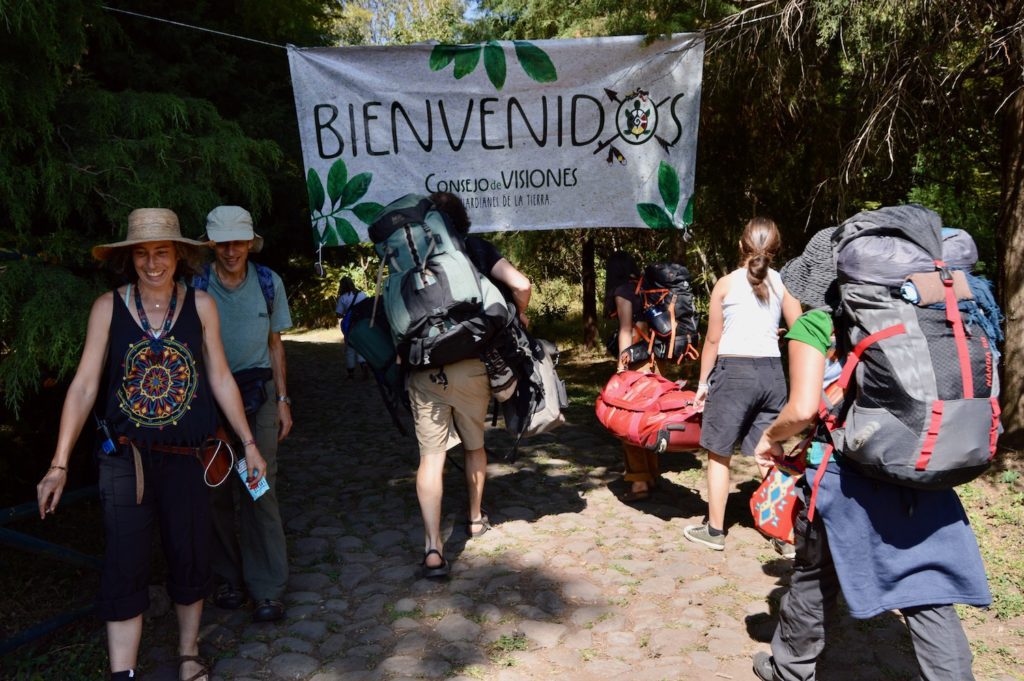
In a green valley of Central Mexico, below the distinctive humpbacked mountains that stand like guardians over the itinerant ecovillage that was taking form in the forest near Tepoztlan, the resonant call of the caracol, or conch shell, rang out from the sacred fire before sunrise: It was time to begin the activities of the day.
Para leer este artículo en Español haz click AQUÍ
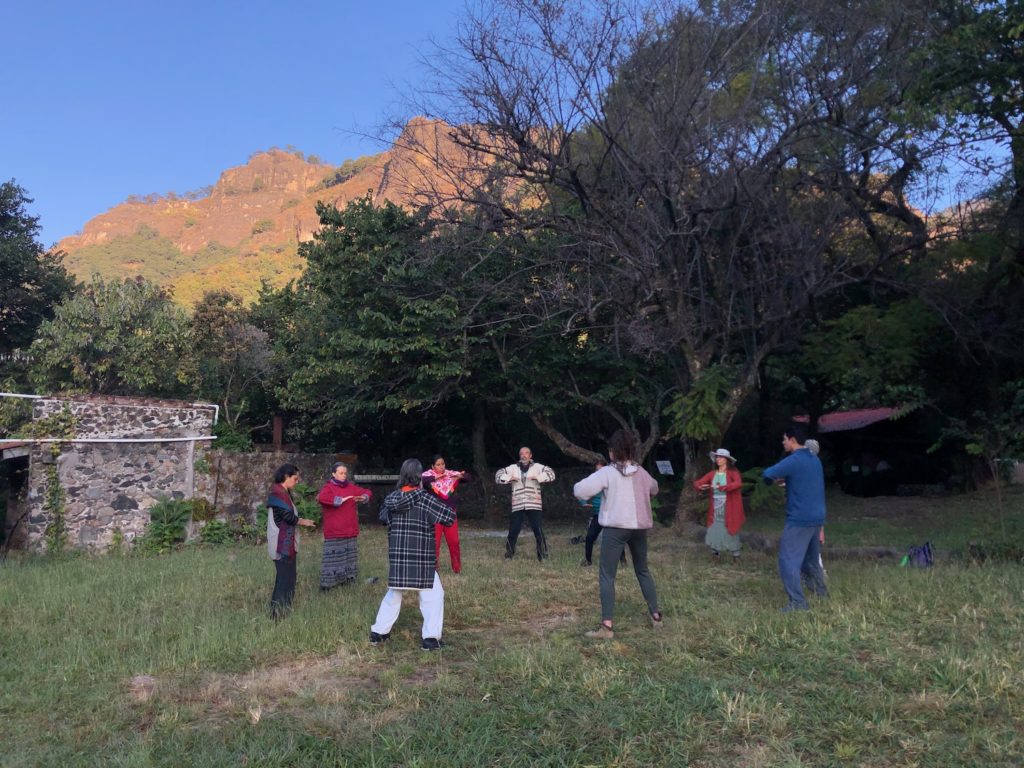
After a five-year hiatus, the tribe of dreamers and doers known as the Vision Council-Guardians of the Earth came together in 2022 from December 4th to the 11th in Meztitla, a scout camping site near Tepoztlan in the Mexican state of Morelos, to share an unforgettable week together, with workshops and celebrations, music and art, healing and sharing, visions and actions in a reflection of what life in community on the land could look like.

“The Embrace of the Amate” was the XVI edition of this 30-year tradition, including a primary focus on the defense of the vast forest corridor where the gathering took place: The Bosque de Agua or Water Forest. One of the things that makes this transformative event unique is that it is a self-generated living process, meaning that the members themselves begin to organize and select a site, develop proposals and programs, organize logistics, raise funds and arrange every detail of the event in more than a year of constant work.
Various individuals step forward to form the Seed Council, taking on the leadership of each thematic Consejo or Council, as well as the roles of production, communications, kitchen, registration and welcome, facilitation, waste management and other commissions. The main Councils this year included Mother Earth (Ecology), Cosmovision (Spirituality and Tradition), Wellbeing (Health), Community and Art and Culture. For a complete list of Councils and their respective sub-councils, see www.consejodevisiones.org.
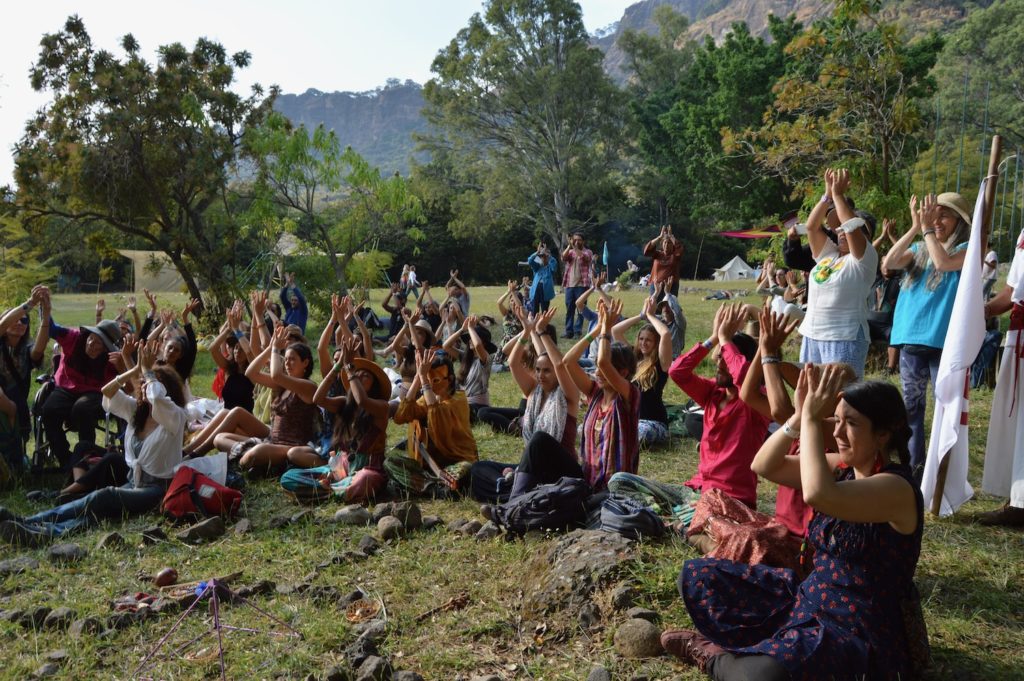
Each morning after breakfast all the participants of the gathering — eventually numbering over 300 — would meet under the blue-and-white stripes of the circus tent that has united this band for decades. There we would hear a brief roundup of the themes of the day and sing to the new songs specially written for the event by “The Guardians of Joy”, a band born in the Consejo formed by Don Diego and Isabel Brown, long-time Rainbow musicians, along with Angélica Narákuri, Amaitsitsi and many other talented attendees.
“All waters are sacred, whether they come from the waterfall or the river or the faucet of your house,” said Laura Kuri, coordinator of the Bioregional Movement in Mexico and one of the organizers of the two-day Water Forest Forum that was a key part of the event. “We have to know where our water comes from, and organize to care for it.”
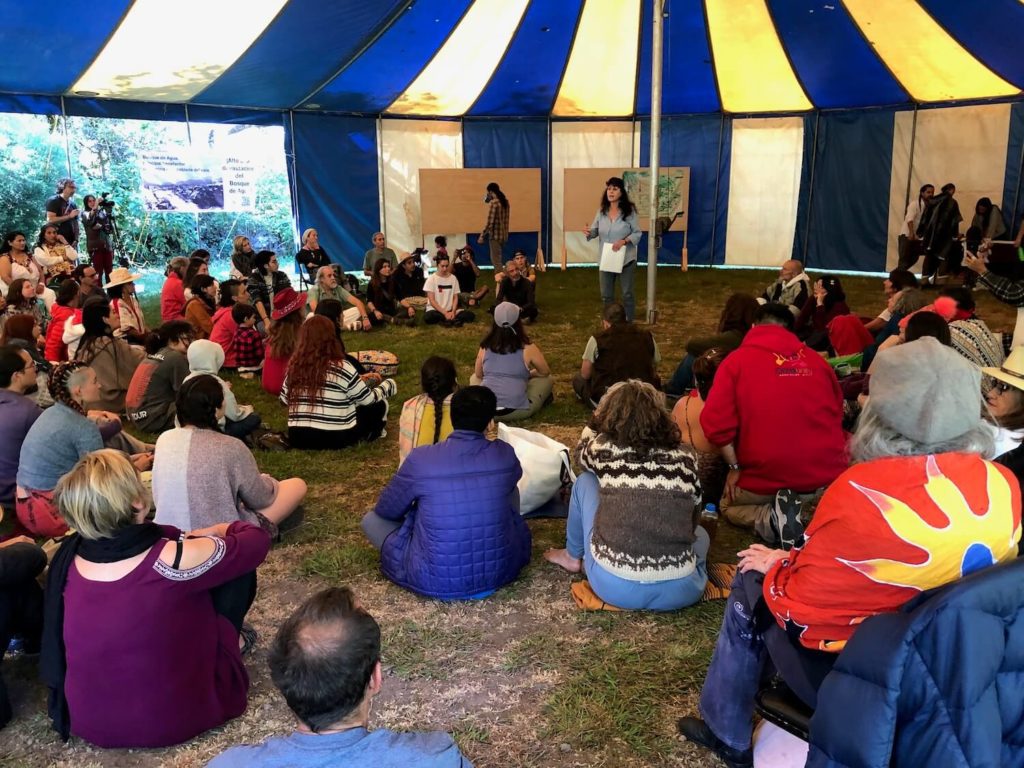
After a motivational history of the movement during the first plenary, she divided the crowd by bioregion and gave us the task of discussing the serious issues with water that face each of our regions — and what might be done and in some cases, what was being done to address them. This was a theme that would be explored in greater detail throughout the gathering.
As the groups discussed the various problems that faced their watersheds, a plaintive wail pierced the air, and we turned to see a white-robed weeping wraith of a woman carrying something in her arms, a pink creature that appeared to be dead. Followed by a procession of plant and animal creatures that wove their way dancingly through the crowd, they were the representatives of the non-human life forms that surrounded us. Alejandra Balado served as an interpreter for each of the creatures, who whispered into her ear through a long cone. The tree man let us know that the actions of the humans were causing great pain and putting them in danger, and they needed for us to include them in our plans and in our daily actions.

The Vision Council has historically been divided into different thematic “councils,” ranging from ecology (Madre Tierra, Mother Earth) to health (Bienestar, or Wellbeing) to spirituality (Cosmovision) to art and culture. There is a Youth Council, a Children’s Council and Natural Time, a council that examines different approaches to timekeeping.
This year, for the first time, an All Species Council was formed to represent all the non-human life forms. The All Species Council was a constant presence in this Consejo, with creatures as varied as an owl, a fire salamander, a bright orange crustacean, a purple jellyfish and a jaguar. The ongoing mask-making workshop was the culmination of a longtime dream of Cristina Mendoza, inspired by a bioregional gathering in Canada with Deep Ecologist David Abrams.
“It goes far beyond putting on a mask, because by doing so you become a guardian of the species, all of them,” said Cristina.
Other leaders of the project included artist Toña Osher, Andrea Scheel, Yael Starseed, Alejandra Balado and We’Moon Astrologer and artist Gretchen Lawlor, whose white-robed presence and mysterious white mask-hat had led the moving all-species intervention in the first plenary.
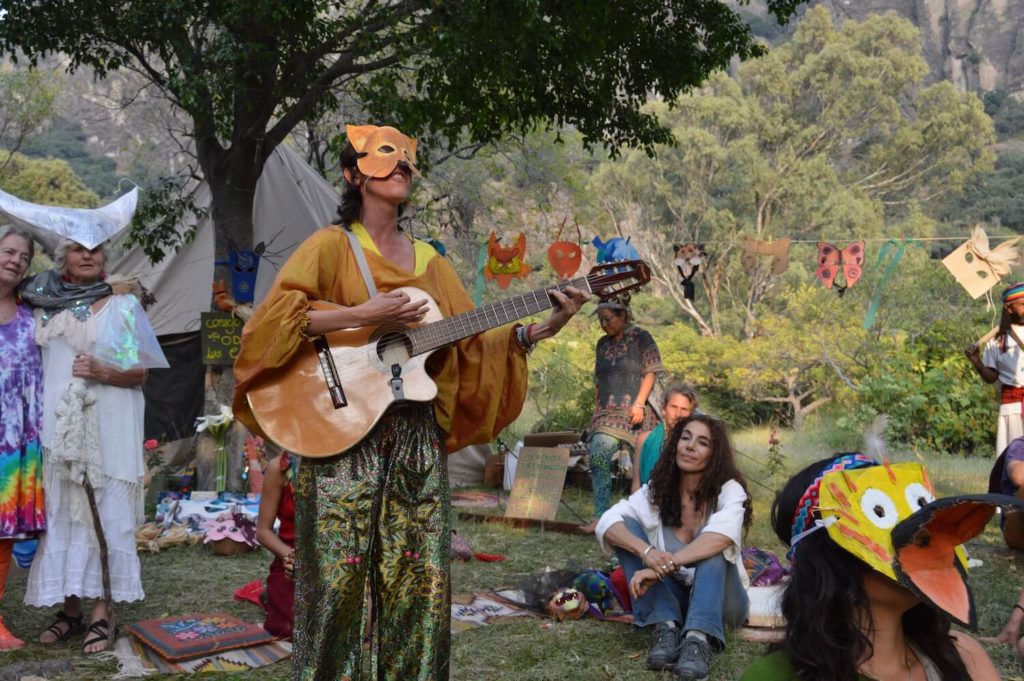
The keynote event for the Mother Earth Council — and indeed for the entire Vision Council — was the two-day Forum on the Bosque de Agua, the forest that is the recharge zone and primary source of water for at least 23 million people (40 million, by some counts) in Mexico City, Cuernavaca, Toluca, Tepoztlan and much of the rest of Central Mexico. That forest is disappearing at an alarming rate due to urbanization, illegal logging and forest fires, and the Forum, attended by more than 200 people, was aimed at generating solutions and building alliances between concerned citizens, the widely dispersed civil society groups and responsible government representatives.
At the two-day Bosque de Agua or Water Forest Forum, representatives from the federal, state and local governments, as well as numerous local communities throughout the sprawling area, came together to explore the rapid devastation of the critical habitat. Beatriz Padilla, an artist and activist who has led the Fundación Biosfera del Anáhuac (FUNBA) for a decade, explained that the water is only part of the issue; the Water Forest provides environmental services from climate change regulation to biodiversity.
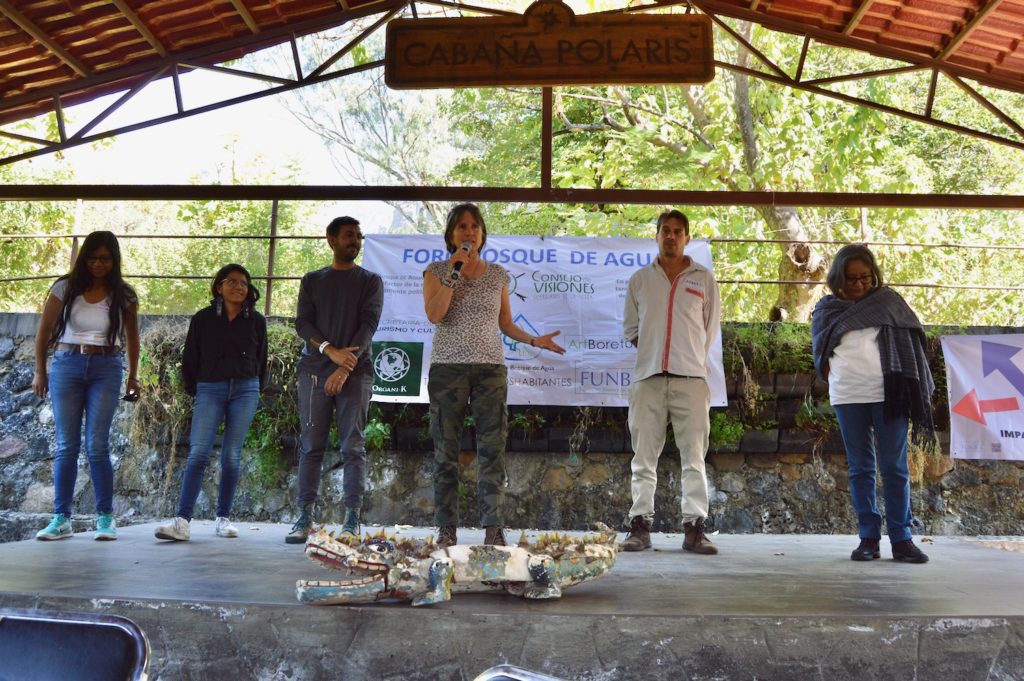
Ten percent of its species are endemic, a total of 325 species of plants and animals found nowhere else on Earth. The organization has been able to pull together a coalition of five research institutions, ten community-based organizations, twelve representatives of other Water Forest communities, several federal and state government agencies, three private sector parties, and ten NGOs. The group is employing the Collective Impact Model, she explained, working to coordinate the efforts of various actors in the defense of the forest to maximize their impacts.
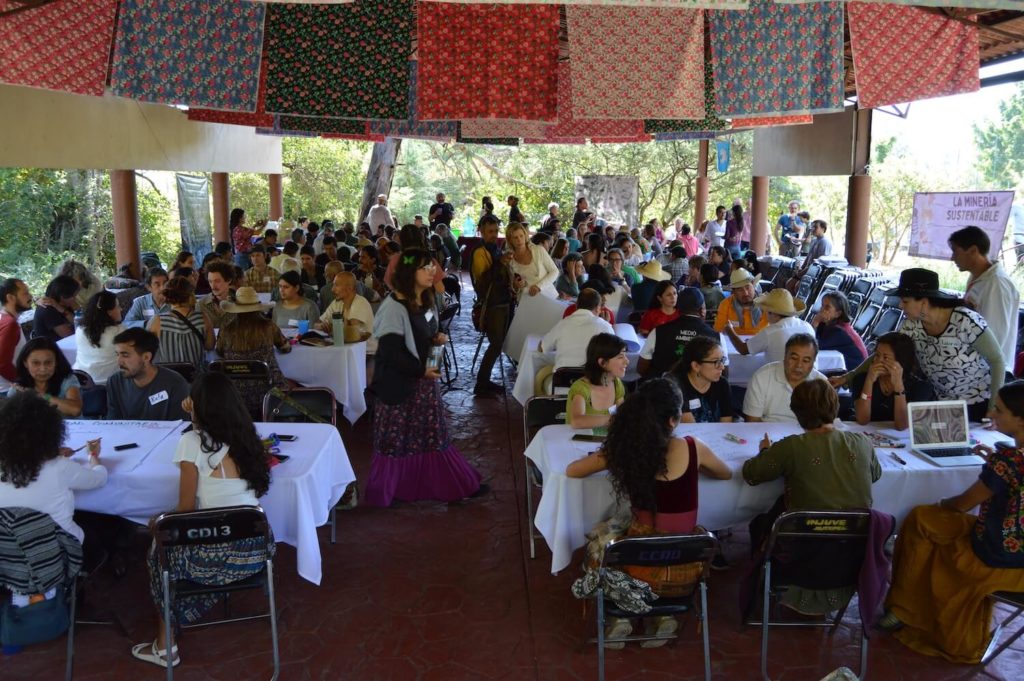
The forum was organized by Beatriz Padilla, Laura Kuri and Arnold Ricalde, with work sessions facilitated by a team that included Ivan Sawyer, Rafael Almazán, Beatrice Briggs and Edgar Gainko. The sessions would bring together Vision Council participants with community members to explore themes such as community identity, climate change, land use planning, fire, governance, and integrated water management. The second day brought in leaders from the local, state and federal government, including Dr. Adelita San Vicente Tello of the Mexican environmental protection agency, SEMARNAT, and Ron Sawyer, founder of Sarar Tranformación, a water sanitation and protection consultant around the world and at home in Tepoztlan.
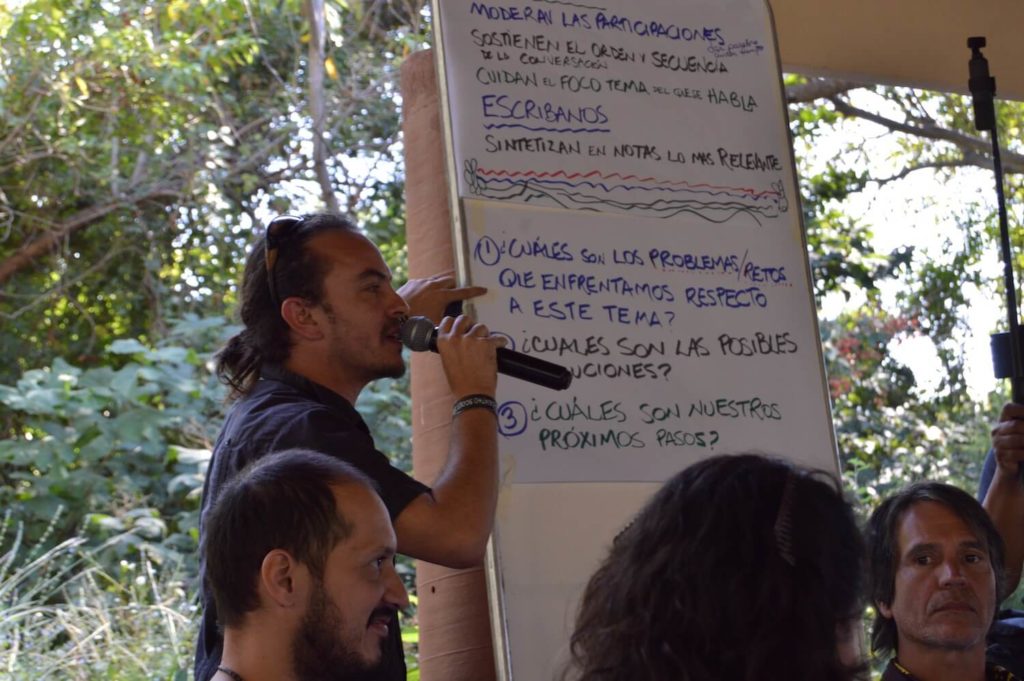
The two-day workshop led to a deeper understanding of the dynamics threatening the forest, a plethora of proposed solutions and a greater commitment to work together toward a more integrated approach to defending the forest. A few of the multiple solutions included: taking greater advantage of carbon offset programs to allow local residents an income for forest protection; greater coordination among water and forest defenders in the different regions; and a fee on downstream water use, especially the growing number of hotels and luxury vacation rentals, to help encourage water conservation, with some of the funds raised to go toward providing rainwater catchment systems, especially upstream in communities that run out of water in the dry season.

To end on a high note, two songs concluded the event: “La Danza del Bosque (Dance of the Forest)” by Chris Wells and “Bosque de Agua,” composed during the event by The Guardians of Joy, with input from different writers and musicians throughout the Consejo.
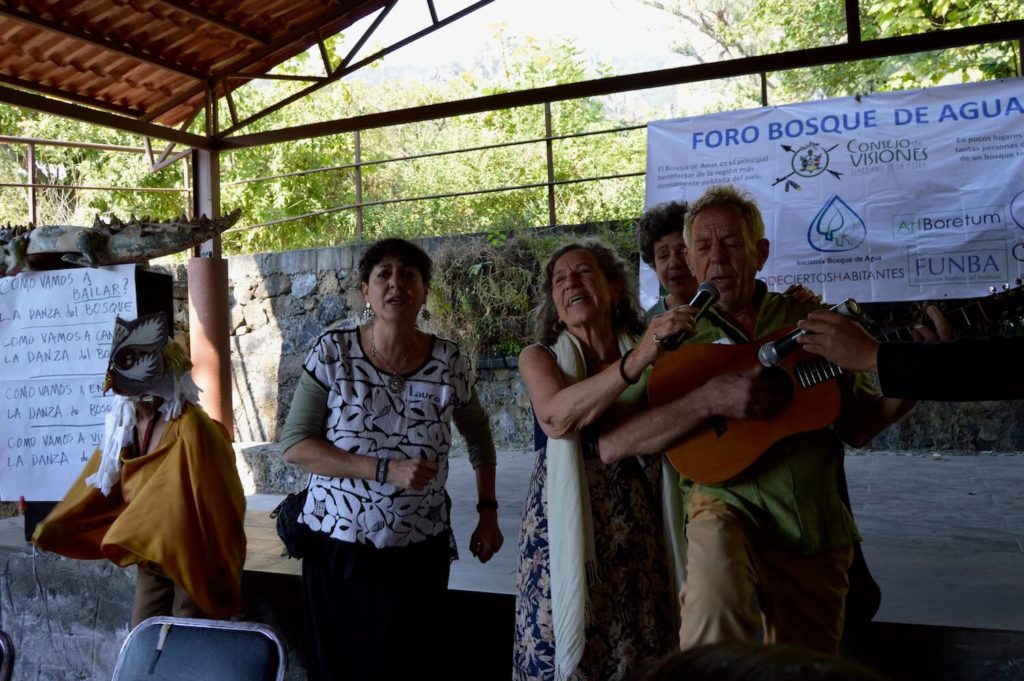
Bosque de Agua (Water Forest)
By the Guardians of Joy
Bosque, gracias por el Agua (x2)
La lluvia que cae nace en el Bosque
Toda la vida depende del Agua
La tala y el fuego tendrán su fin
(Forest, thank you for the water
The rain that falls is born in the Forest
All life depends on the water
The logging and the fires will come to an end)
Bosque, Gracias por el agua (2x)
The threat to the forest
Is a threat to all Life
So we must be the voices of the trees
Cuarenta millones dependen de ti
Todos deben saber
Que el agua viene de aquí
El Agua nace aquí
(40 million depend on you
Everyone should know
That the water comes from here,
The water is born here.)
From the Council of Wellbeing, therapists, psychologists, herbalists and a variety of traditional and alternative healers shared a pharmacopeia of strategies for self-care and caring for others. Self-healing is self-knowing, participants were taught, and they learned about a wide range of therapies. “Caring for yourself is caring for others and for the Earth” was a central theme. In the Red Tent, a special gathering place for women, participants delved into themes of self-empowerment and the sacred feminine, ancestral midwifery, sexuality and menstruation, from an Earth-connected perspective.
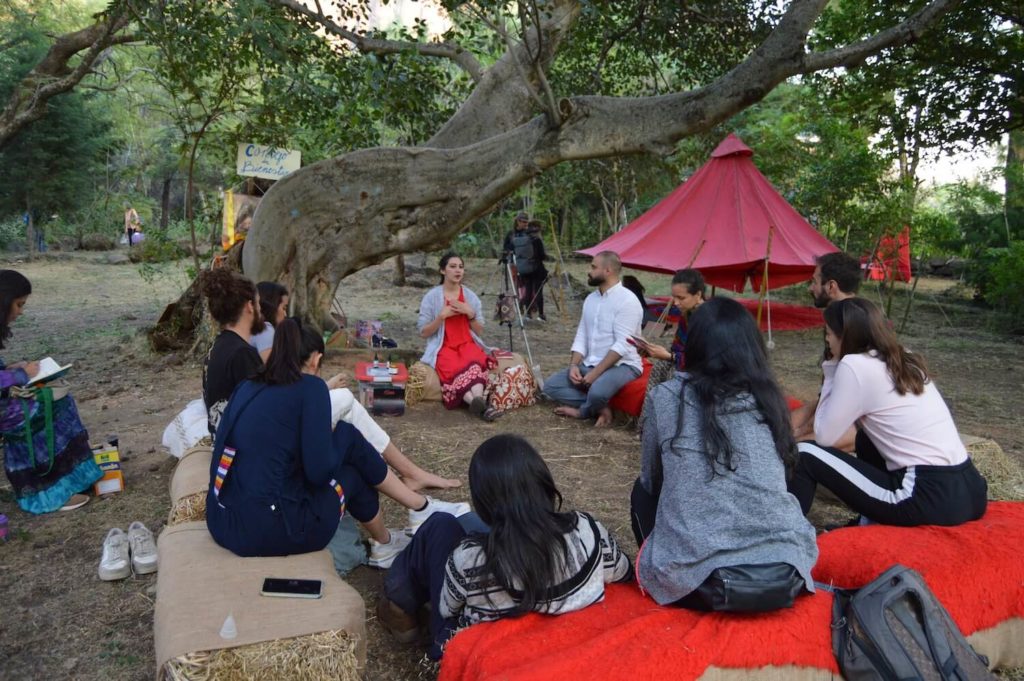
Psychologists Armando and Anja Loizaga-Velder from Centro Nierika led a discussion on the use of entheogenic plants, while other psychologists and indigenous elders from different traditions shared insights and wisdom from their own cosmovisions. Loizaga is among those spearheading an effort to pass a national law that would regulate the therapeutic use of these plants, such as psilocybin mushrooms and ayahuasca, which are being widely used by unqualified and often unscrupulous so-called “shamans” who can cause lasting psychological damage.
On the other hand, these plants can be powerful psychological healing agents when used by therapists or Indigenous elders who have been properly trained. Unfortunately, said Loizaga, current law in Mexico, like in the U.S., does not acknowledge the appropriate use of these plants, and several Indigenous elders have been incarcerated in Mexico for sharing their traditional medicines and practices. Learn more at Nierika.info.

Alternative approaches to economics was another forum, bringing together leaders in the international movements to establish solidary economies that support local communities and life on the planet. Facilitated by Arnold Ricalde of Organi-K, who discussed the need for a circular economy that takes into account environmental costs, the roundtable began with a tribute to Luis López Llera, an eco-social activist and pioneer in establishing alternative economic networks.

Alternative currencies such as the Tumin of Oaxaca, the Ollin of Tepoztlan and the Kuni and the Verdillete of Queretaro are helping to promote green local economies in their respective communities, said participants. The discussion included presentations by Marco Turra Farao, Ricardo Velez, Silvia Gonzalez, Laura Collin, Jack Krakaur and Georgina Cocu Toussaint, among others.
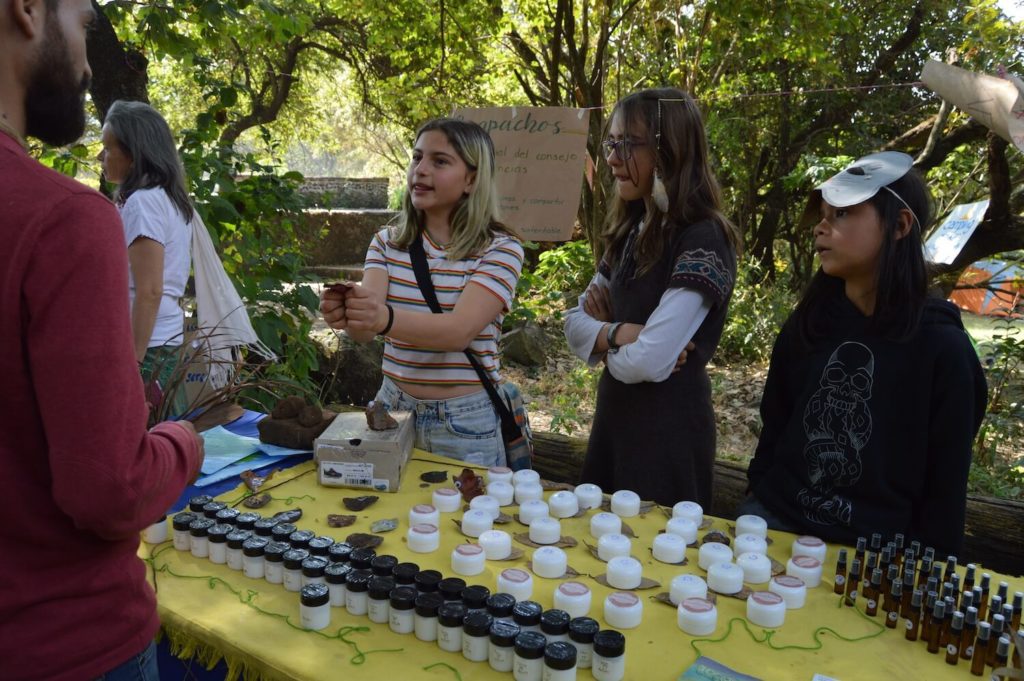
Under the guidance of Silvia González, the Children’s Council developed their own currency — the Apapacho, word that in the indigenous Nahuatl language means “hug” — and they made their own skin care products which they sold for Apapachos.
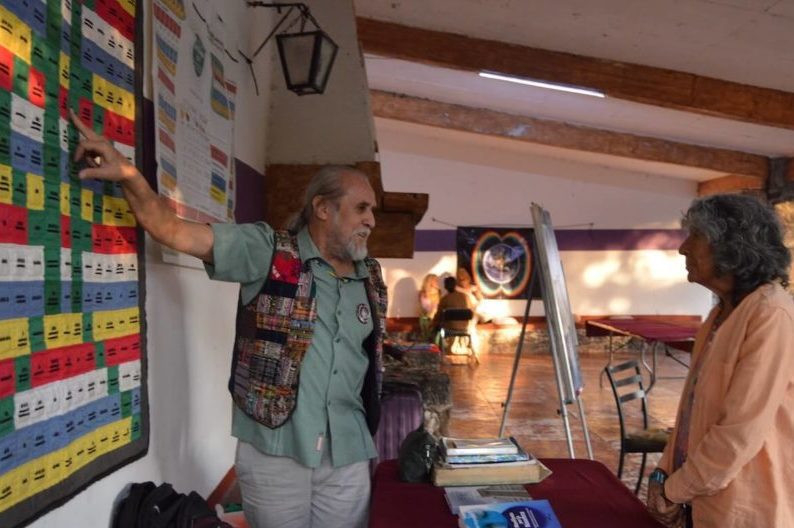
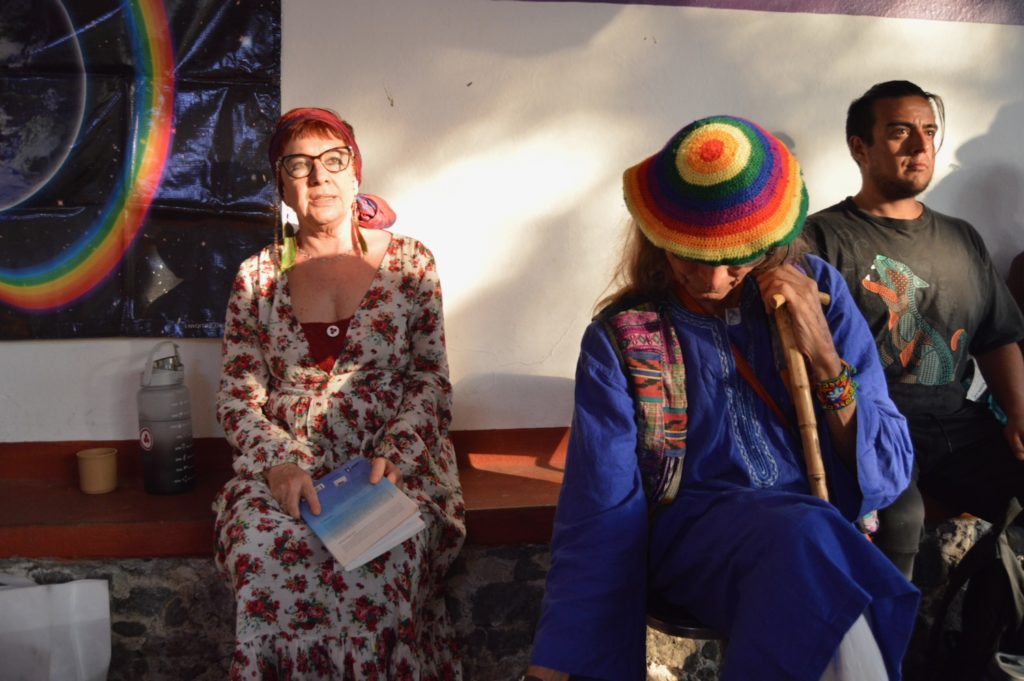
Agroforestry, Native Corn, climate change, biodiversity — all were themes being explored in the Mother Earth Council. Meantime in Natural Time, coordinators Noelle Romero and Luis Zavala explored ancestral and alternative approaches to time, looking at the ways in which the Gregorian Calendar controls our minds and disconnects us from Nature.
In the Purple Tent, Tere Navarro, Beleni Inti, Carlos Gomez and others provided a space to nurture wellbeing and explore what it means to create a Culture of Peace.
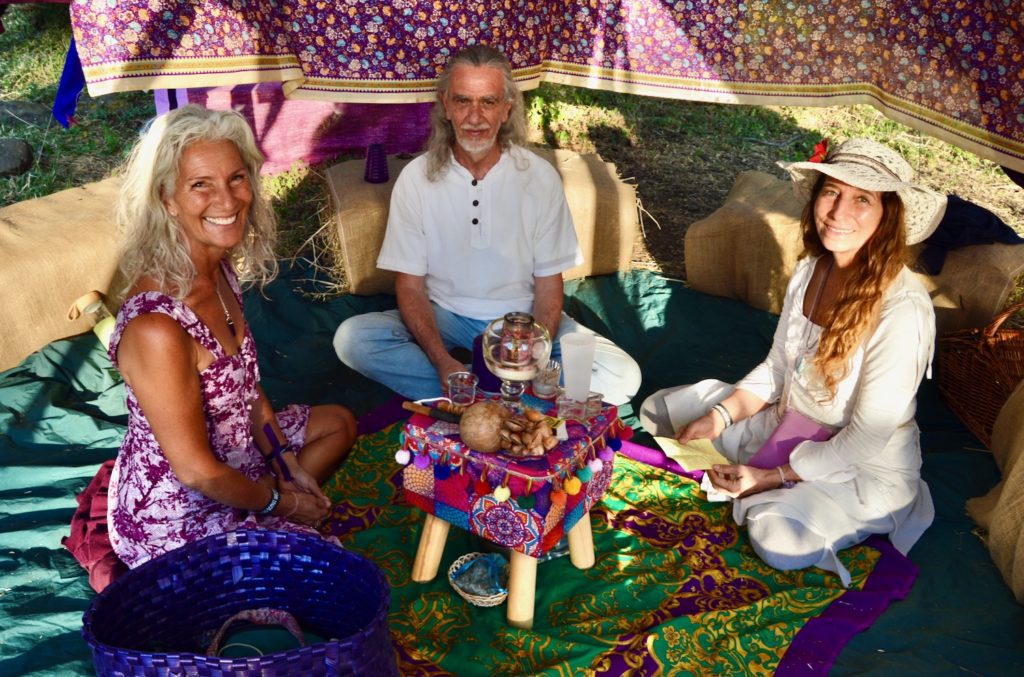
The Cosmology Council hosted a number of elders from several tribes who held ceremonies from their different traditions, including a Mayan cacao ceremony and temazcales every morning, the Central Fire altar that was kept burning day and night from the beginning until the end of the gathering, as well as a Water Altar.

Every night there were cultural events; circular dances and concerts took over the Temple of Arts or the Main stage, featuring top-level musicians, such as Roco Pachukote from Maldita Vecindad, Alyosha, Fantuzzi, Trio Santa Cruz, La Santa Rumba, Grupo Tribu, Moyenei, Estusha, Afrodita, Xuna, and Fantuzzi and Eric Mandala iconic figures of the Rainbow Family, along with many others, local, Mexican and international. Even a brass band from the traditional “Chinelos” from Tepoztlan got everyone up on their feet dancing.
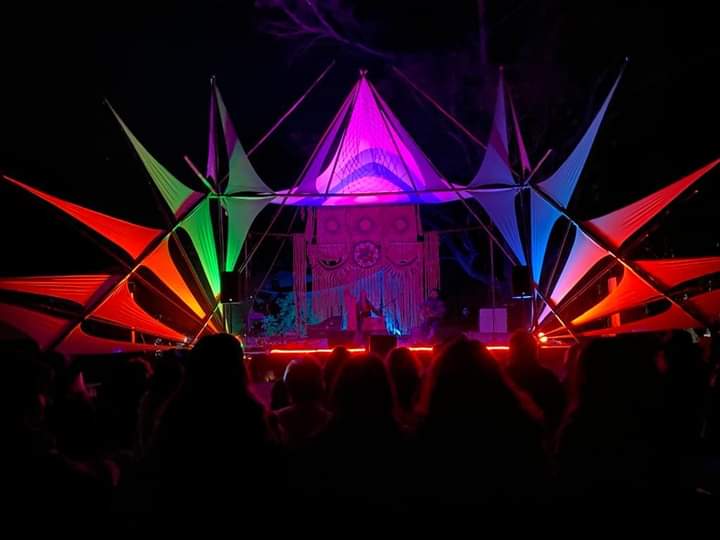
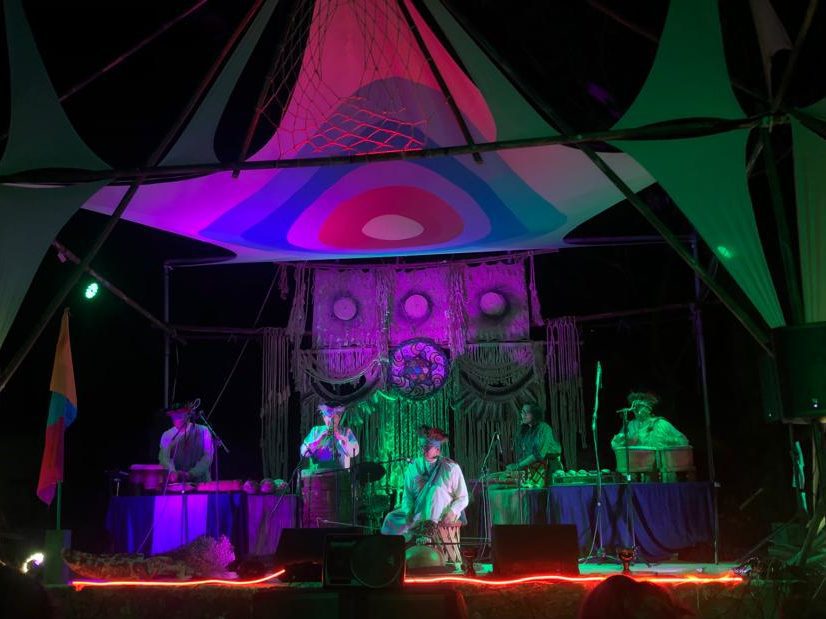
Rising musicians who attended the gathering had the opportunity to share their art during the open mic spaces. One night was Rainbow Night, when Consejo cofounder “Coyote” Alberto Ruz shared a history of the Rainbow movement and its connection with the Consejo, and songs from both movements were shared.
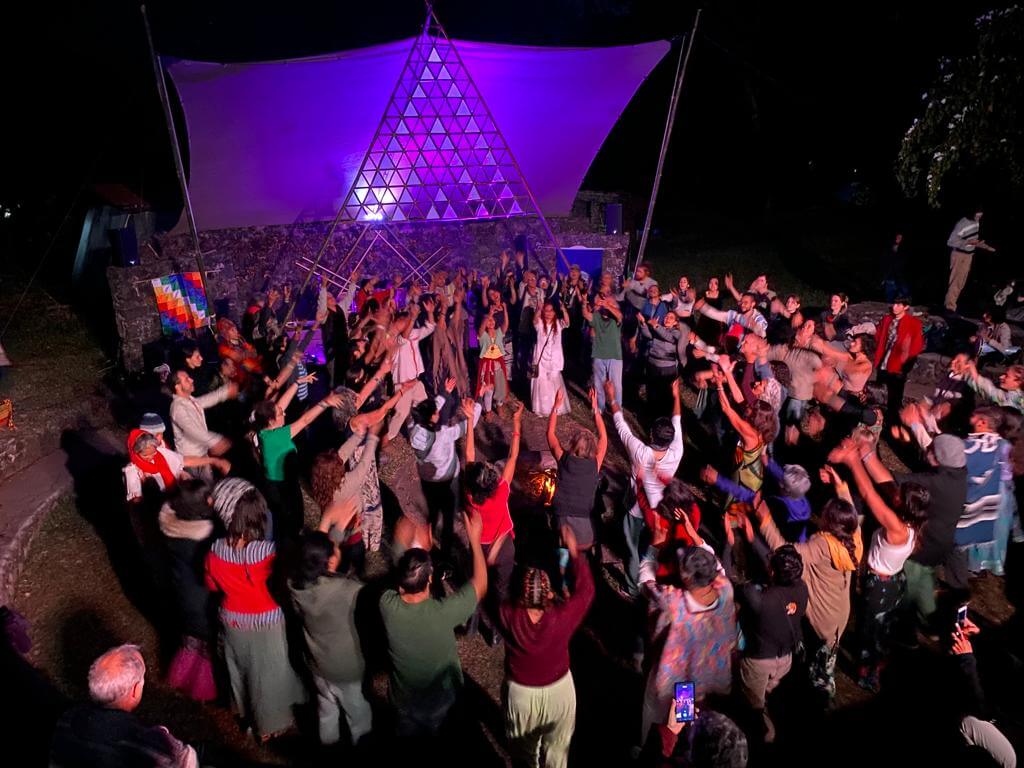
The Art and Culture Council also hosted art exhibitions, two of which took place in galleries in Tepoztlan, and a group of painters including youth and children, led by Diana Semilla, painted for hours, sometimes all night, to complete a mural that will remain in Meztitla as a powerful reminder of the Consejo.

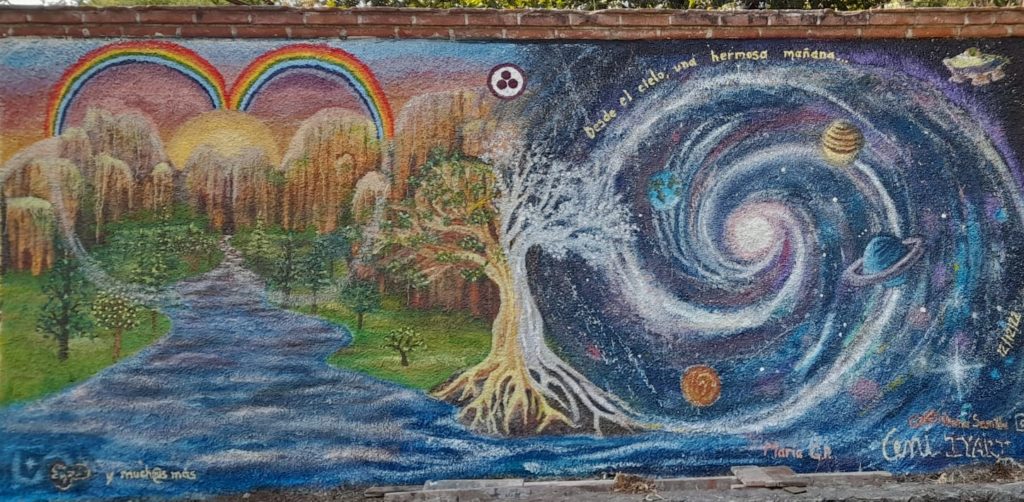
On the final day, a procession led by musicians, artists and species of all kinds wound their way through the encampment from council to council, where each would give a presentation that captured the essence of that group’s work for the week.

The Youth Council presented two murals they had painted during the week and a powerful theater production that depicted the destroyers of nature as narcotraffickers on the attack, mowing down resistors and bystanders with their handguns. Soon all the young actors lay on the ground but gradually arose for a final act: cradling fragile glass spheres representing the life they were sworn to protect, they sang of a future in which life is treated as the sacred force that it is.
El Abrazo de la Juventud (The embrace of the youth)
By the Youth Council
Somos el abrazo de la juventud
Colaborar es nuestra virtud
En armonía con el movimiento,
Creatividad es nuestro instrumento
Fuera los juicios para liberarte
Trasmútalos ese es tu arte
Reivindica este corazón
Con el abrazo del Amate
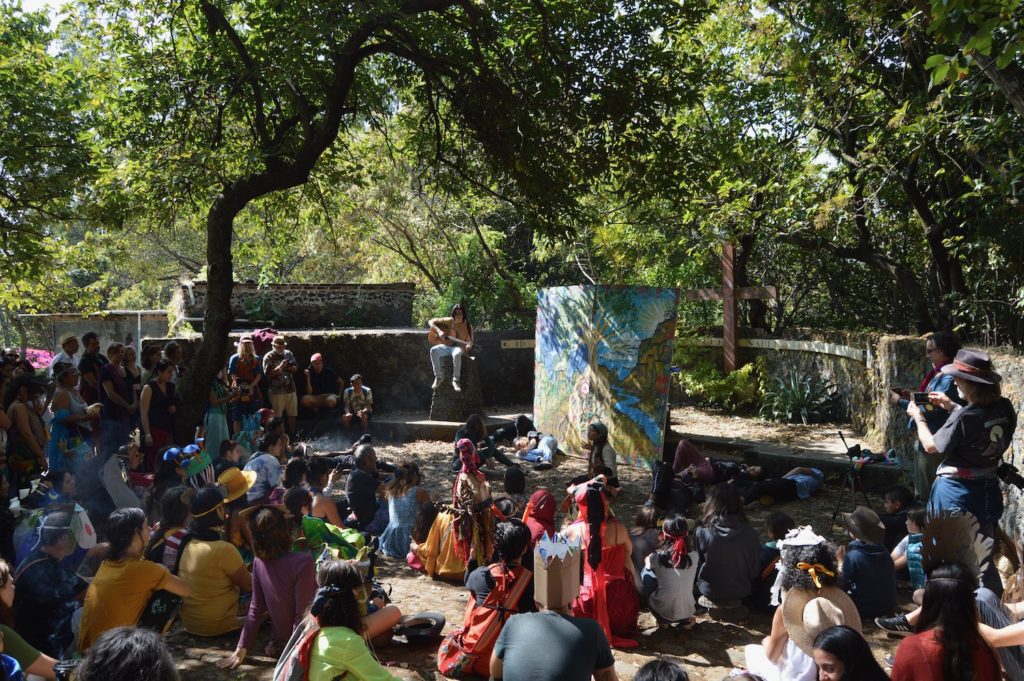
(Translation: We are the embrace of the youth
Collaboration is our virtue
In harmony with movement,
Creativity is our instrument
Away with the judgments, set yourself free
Transmute them, that’s your art
Reclaim this heart
With the embrace of the Amate)
One of the most important topics for the Vision Council is to leave no footprint on the site where the gathering takes place, so waste management is a core topic in every plenary. Attendees were asked to manage their own residues; all participants were were given special bags and encouraged to keep their trash and take it to the residue station, where all the materials were classified and separated. Except for the bathrooms, the campground’s regular trash cans were removed or blocked for use. A comission was formed that worked every day on separating and handling all the garbage so nothing was left behind.

The compost was treated in a special composting area, and all recyclable residues were taken separately to recycling facilities. The amount of non-recyclable waste that was generated during the event was the least ever in the history of the Consejo — a major feat, considering it was a weeklong event with more than 300 attendees.

The Education Council carried out a demonstration of the results of their activities for the week, where they mainly focused on alternatives to schooling and the rescue of the inner child. One of their main activities was a facilitation workshop where they taught how to carry out efficient meetings, forums and roundtable discussions where proposals and solutions for different problems can be “harvested.”
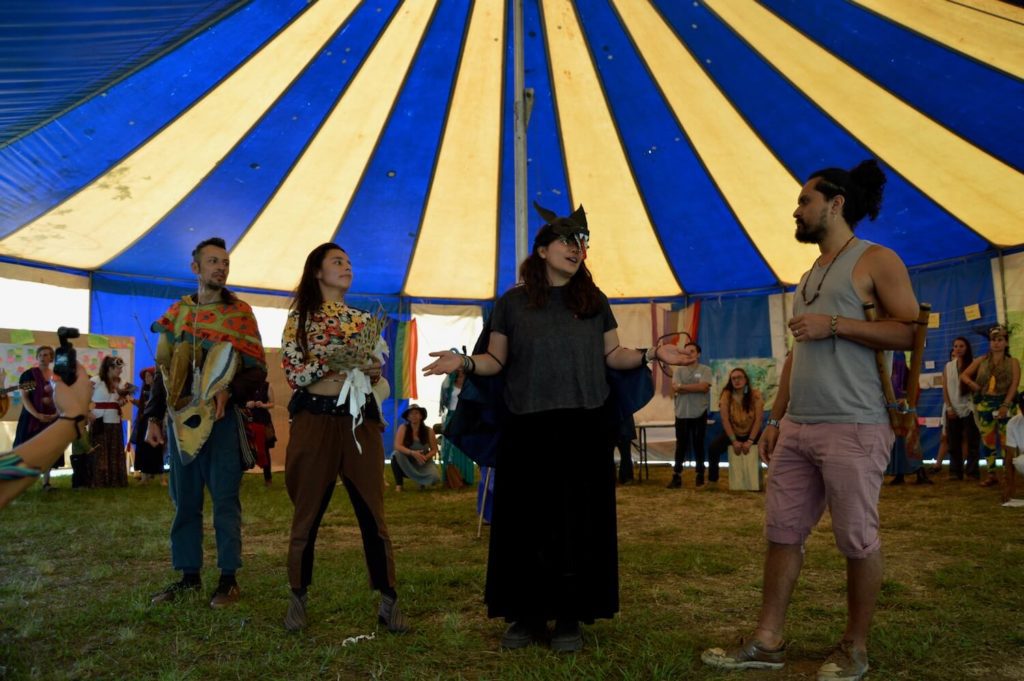
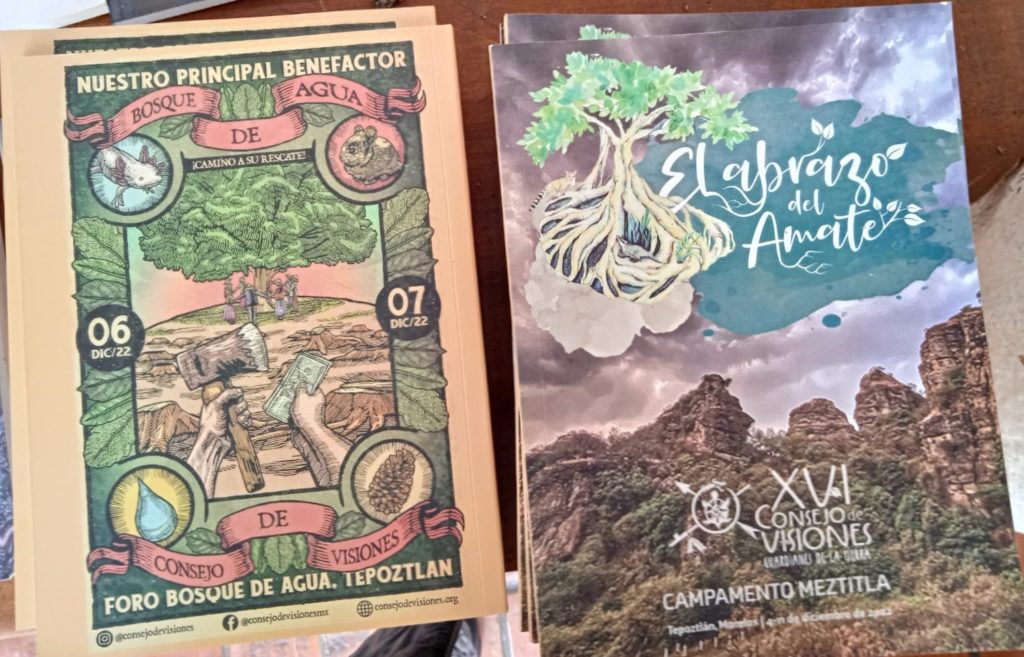
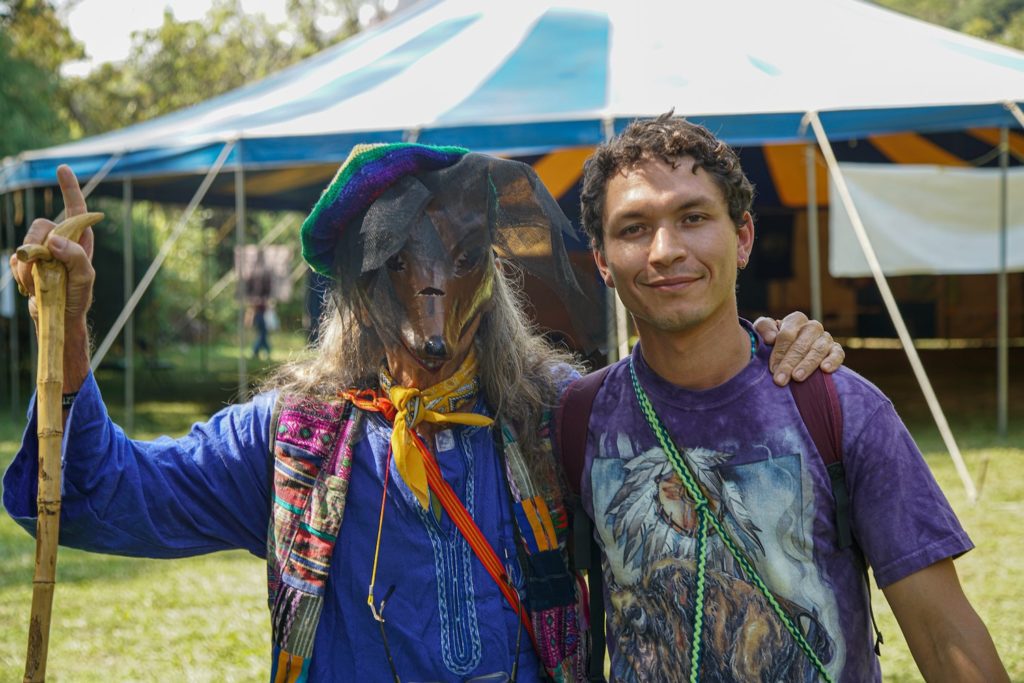
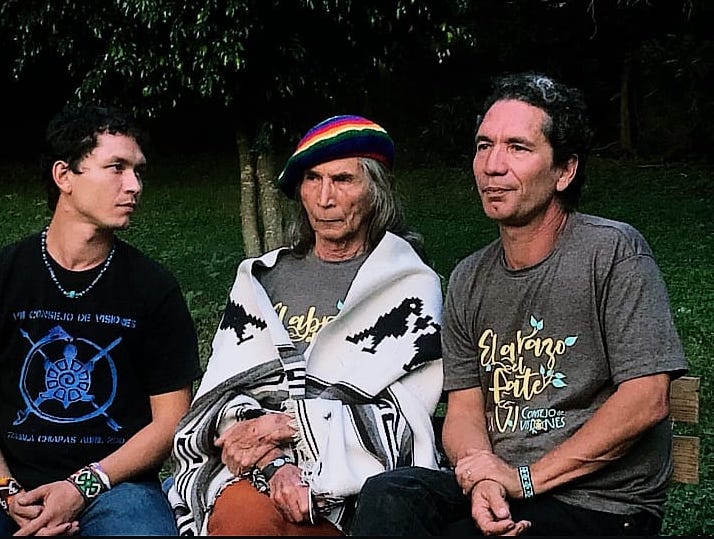
As the event came to a close, the group gathered around an altar that had been made to honor the Water — the waters of this region, as well as the sacred waters within. Coyote Alberto gestured to the Tepozteco mountains in the background. “From there comes the water we all depend on, and that water is turning increasingly into fires. This week we dedicated ourselves to those waters and the forest that it comes from. We are the guardians of the new humanity, and now we commit ourselves to defending it.”
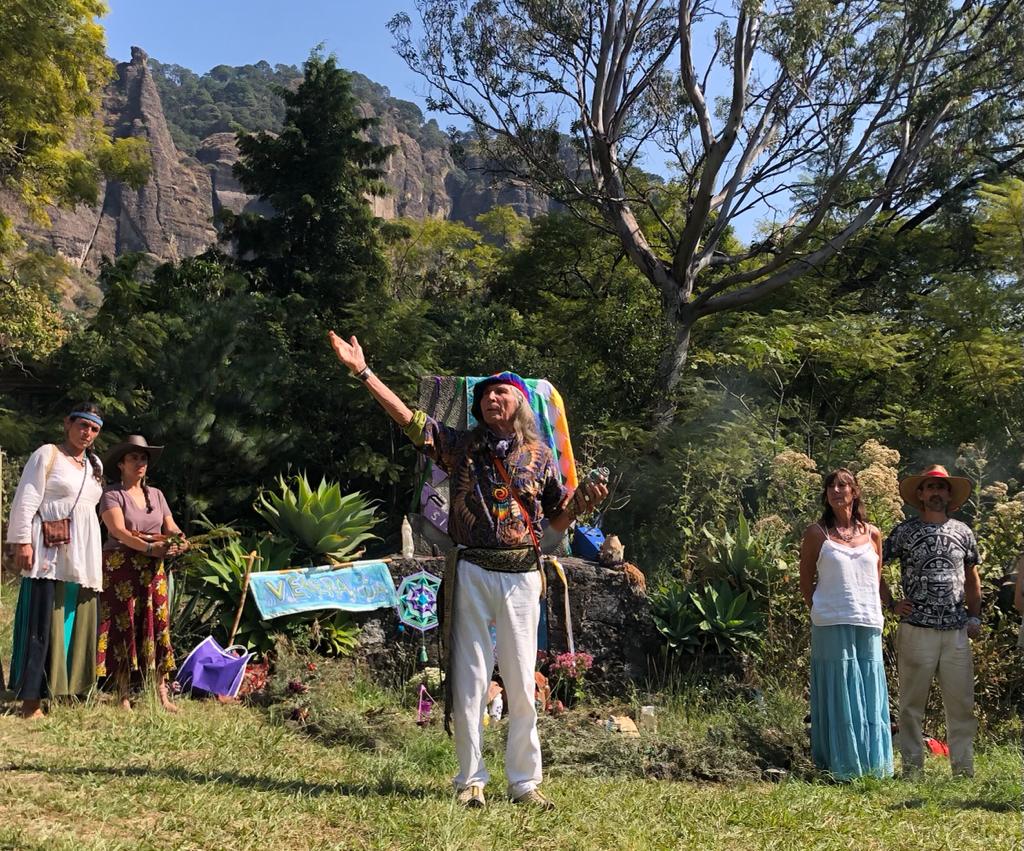
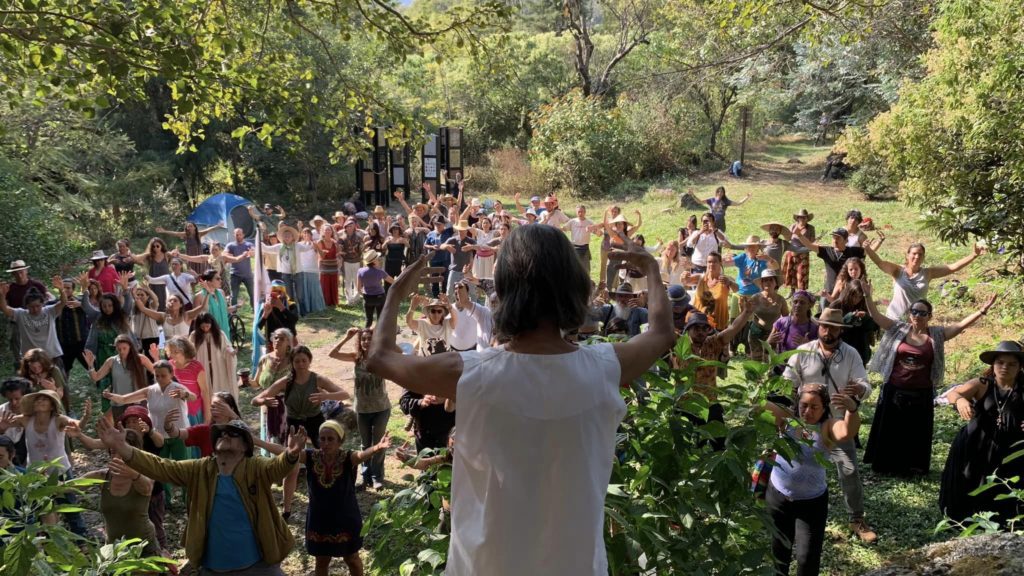


Felicidades Tracy and Proyecto Esperanza! As usual, you have spun magic with your words and collection of images! It’s a very painterly rendition of a vast and difficult to record experience which captures the essence and the message beautifully. I applaud your inclusive and encompassed portrayal. Sincerely, The Owl, buuuuuowwhhh
Thank you so much for your kind words, dear Toña. The hard work and creativity of Angelica Almazán, our coeditor and designer, must be acknowledged as well. Very blessed to count on her as my co-conspirator in this project.
Wow what a great community.
It is truly beautiful to see/feel the energy everyone generated during this most auspicious and important gathering. Felicidades to all participants! The energetic ripples sent out across the land, waters, and cosmos are strong!!